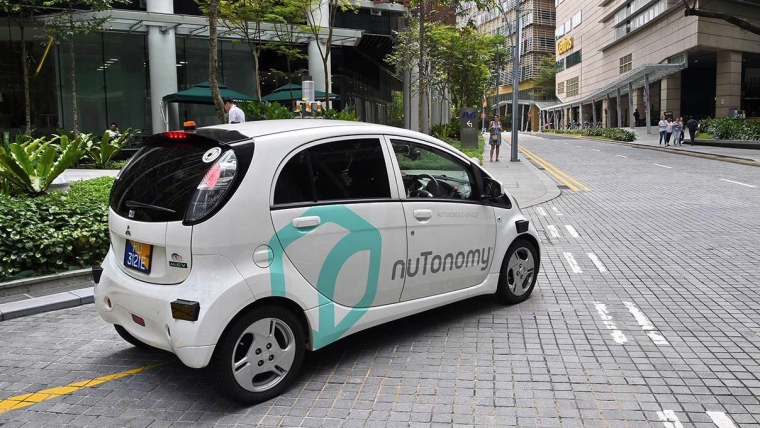
Tiziano Terzani was no fan of Singapore. The Florentine writer and journalist explored every corner of Asia. He had witnessed the fall of Saigon to the People’s Army of Vietnam and the Viet Cong, and the fall of Phnom Penh to the Khmer Rouge. When he visited Singapore, he concluded that all it had to offer was its airport: “the concentration of everything Singapore has to show: its efficiency, its cleanliness, its order.” Otherwise, the wealthy city-state was nothing more to him than “the largest supermarket of consumer goods, futility, and prissiness in Asia.”
Terzani’s assessment has some truth in it, but it is far from complete. Singapore’s meticulousness is good for a lot more than making the airport run smoothly; it also allows ideas to be transformed into action with astonishing speed. As a result, Singapore has become a living laboratory for urban innovation.
I have seen this process firsthand. In 2013, with the 50th anniversary of Singapore’s independence approaching, the head of the city’s civil service sought my feedback when considering what historical milestones or experiences should be central to the celebrations. Perhaps, I suggested, Singapore should focus not on the past, but on the future, such as by propelling innovation in a sector in which it has always excelled: mobility.
Only a few days passed before I received a phone call informing me that the government had decided to establish a working group, the Committee on Autonomous Road Transport for Singapore (CARTS), to study the transition to driverless cars, and I was invited to participate. Since then, the committee has met with key stakeholders – both public and private – several times per year, in order to lay the groundwork.
Autonomous vehicles have already become incredibly advanced, but the challenge to their development is not only technological. Transforming urban mobility also demands rethinking the spaces where our newly independent cars operate – and where they are stored.
If car- and ride-sharing services have blurred the traditional distinction between public and private transportation, driverless cars could all but obliterate it. After they go to work, most people don’t need their car to be parked outside their house or office all day long. If that car was self-driving, it could spend its idle time giving rides to family members, neighbors, acquaintances, or anyone else in town.
Given this, shared cars could well become the new normal. And, as the total number of motor vehicles in circulation declines, so, too, would a city’s parking needs. Our lab at MIT, Senseable City, estimates that the transition to shared, driverless cars could enable Singapore to eliminate around 80% of its 1.3 million parking spaces.
The newly available land could spur a reimagining of residential areas, with curbsides being lined not with rows of cars and parking meters, but instead with outdoor seating for restaurants, playgrounds, and miniature gardens. Space could also be dedicated to charging stations for electric vehicles, loading and unloading areas for e-commerce, and parking for scooters and shared bicycles.
In most cities, such a vision would be laid out in an attractive, well-researched dossier – and then left to gather dust. Not in Singapore. There, the city’s disciplined government apparatus and major industrial players moved in lockstep. After only a few years, the amount of progress has been stunning.
It helps to have the support of Singapore’s Economic Development Board and sovereign-wealth fund, which have pursued coordinated, large-scale investments in new mobility start-ups such as nuTonomy. Founded at MIT, nuTonomy began testing the world’s first fully autonomous taxi service in Singapore in 2016. The next year, the company was sold for $450 million, generating significant financial returns for the government.
And more innovation is on the way. Our design firm helped to create CapitaSpring, a 280-meter-tall skyscraper – scheduled to open at the end of this year – that takes into account the impending transition to future mobility systems. For example, the parking garage is slightly higher than normal and its floor is not inclined, so that, as demand for parking falls, it can potentially be repurposed as offices overlooking Marina Bay.
It is no coincidence that Singapore, an island without abundant natural resources, has achieved some of the world’s highest levels of per capita GDP in only 50 years. Its leaders have consistently demonstrated a capacity for long-term vision and decisive action.
To be sure, Singapore is far from perfect. The weight of progress has often been carried by a large migrant population, working in dangerous, low-paying jobs with few rights or opportunities for advancement. And while public administration is fast and enterprising at the top, the middle ranks remain slow and risk averse. Finally, the orderliness that so bored Terzani is stifling creativity. The start-up economy, which is transforming many European capitals today, is still struggling to take hold in Singapore.
Despite these limits, Singapore is perhaps the most advanced urban laboratory in Asia, especially when it comes to mobility. It deserves to be studied and, in many ways, admired.
Carlo Ratti, Director of the Senseable City Lab at MIT, is Co-founder of the international design and innovation office Carlo Ratti Associati. Copyright 2021 Project Syndicate, here with permission.
6 Comments
This won't work in NZ- too many rules and regulatory minefields bonded with fireworks.
Anyway, where's the mana in self-driving vehicle?
'Mana is a Māori word best translated as a combination of presence, charisma, prestige, honour, and spiritual power.' And for those teenagers killed in a car crash near Timaru - what is the word for their driver? Bring in autonomous vehicles, please.
Great article.
A bureaucracy that does stuff. Wonderful.
Meanwhile in Wellington we have a bureaucracy that thinks about it.
Tiziano Terzani was no fan of Singapore. How can he make these statements ? He does NOT know Singapore and has no understanding at all of Singapore.
Singapore is a very SAFE country, very highly advanced, ALWAYS advancing and trying to better, they are leaders in many fields compared to other Asian countries, 2nd to Japan. The list of their successes is too many to mention here.
Even China has great respect for them and even asks for their advice from time to time.
His statements have very little understanding of Singapore
Mobility, only if in the sense it denies mobility access into the vehicles at all. What is the point when you are cutting out those who need the service the most and denying them access. You could say you are going to provide public transport and deny the public access to it and it should deserve the same amount of ridicule as this article because these non mobility vehicles with self driving are just poorly programed taxis which only handle limited conditions and even more limits to who is allowed in them.

We welcome your comments below. If you are not already registered, please register to comment
Remember we welcome robust, respectful and insightful debate. We don't welcome abusive or defamatory comments and will de-register those repeatedly making such comments. Our current comment policy is here.